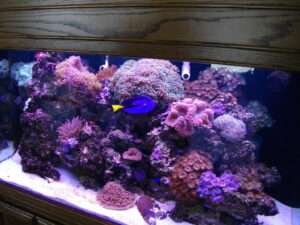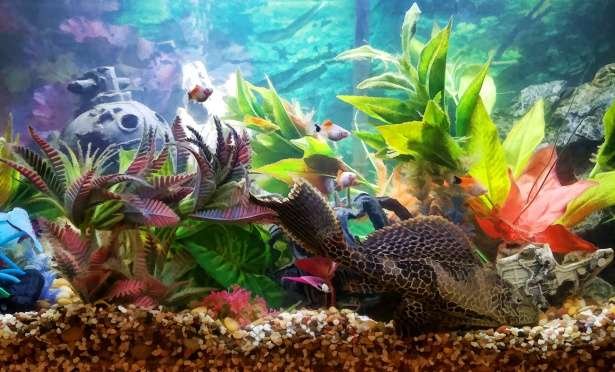Saltwater Aquarium Sumps

A sump is a tank that holds water that you put under your aquarium. This is where you keep your filtration and extra life support gear so you don’t have to hang or submerge it in your show tank. This not only makes room for more advanced equipment, but it also keeps your display tank clean and free of clutter. It also adds more water to the system, which makes it more stable in the long run.
How Does a Sump Work?
A drain in the display tank lets water into the sump. After going through the sump filter, this water is pumped back into the tank by the return pump. When the water level in the display goes up, it spills through the drain and goes back to the sump, starting a new cycle. The water in the tank is always moving back and forth between the display and the sump. Any water that comes in through the return pump makes the same amount of water flow back down through the sink and into the sump. This keeps the water level steady.
What’s the best sump size?
Most people agree that the best thing to do is to choose the biggest sump that will fit in the room you have. A bigger sump holds more water, which helps get rid of waste better and gives you more room for tools, which makes some maintenance tasks easier. It is important to keep in mind, though, that a bigger sum means a bigger expense.
A general rule of thumb is that your sump should be at least 25% of your tank’s overall water volume. Bigger sumps are fine, but they shouldn’t be any smaller. To give you an example, a 100-gallon display tank needs a sump that can hold at least 25 gallons of water.
What Should You Put in a Sump?
What gear you pick will depend on how you plan to filter the water or what kind of reef tank you want to keep. As there are a lot of different types of filtration and other life-support tools that can work in a sump and help your aquarium, it’s hard to give one definition that works for everyone.
So, here are some common pieces of equipment that you will likely find in 90% of saltwater tank sump pumps, along with a list of some other useful items that we think you should also have.
Standard Tools:
Mechanical filtration: This type of filtration gets rid of waste particles in suspension and includes filter socks, filter floss, and a wool filter roller.
The protein skimmer gets rid of dissolved organic waste.
A refugium or macroalgae reactor takes nitrates and phosphates out of the water and helps to make it more diverse.
Media Reactor: This is a machine that holds chemical filter media like carbon and GFO.
Heater: Keeps the water at a steady temperature.
The display tank, which is often called “the heart” of your aquarium, gets water pumped back into it by the return pump.
Other Things: Biomedia; Probe holder; Dosing and ATO tube holder; UV Steriliser
Does a sump filter work better than a canister filter?
A few things make most people agree on the fact that a sump filter is better for reef tanks than a canister filter:
Sump:
It raises the water level, conceals and protects equipment, and adds space, and the overflow system helps keep the water level steady with an ATO.
It can be fixed while in use and is more flexible.
Canister filters are smaller, cheaper, and easier to set up.


